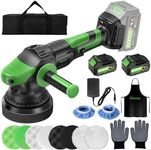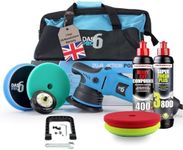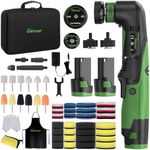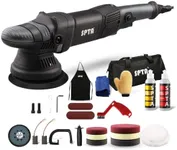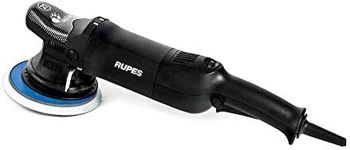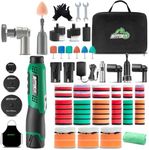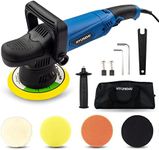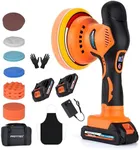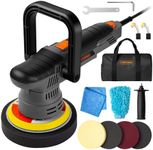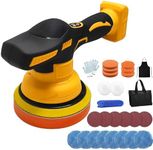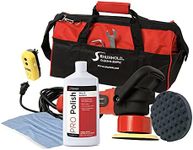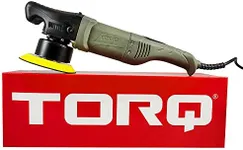Buying Guide for the Best Dual Action Polishers
When choosing a dual-action polisher, it's important to understand that this tool is designed to help you achieve a professional-level finish on your vehicle's paintwork. Dual-action polishers are popular because they are user-friendly and reduce the risk of damaging the paint compared to rotary polishers. The key to selecting the right dual-action polisher is to consider your specific needs, such as the type of vehicle you have, your experience level, and the kind of results you want to achieve. By understanding the key specifications, you can make an informed decision that will help you get the best results.Orbit SizeOrbit size refers to the diameter of the circular motion that the polisher's pad makes. This is important because it affects how aggressively the polisher can cut into the paint. Smaller orbit sizes (around 8mm) are less aggressive and are suitable for beginners or for finishing work. Larger orbit sizes (up to 21mm) are more aggressive and can remove defects more quickly, but they require more skill to use effectively. Choose a smaller orbit size if you're new to polishing or if you want more control, and a larger orbit size if you have experience and need to tackle more severe paint defects.
Speed SettingsSpeed settings on a dual-action polisher determine how fast the pad rotates and oscillates. This is crucial because different polishing tasks require different speeds. Lower speeds are ideal for applying waxes and sealants, while higher speeds are necessary for cutting and correcting paint defects. Most polishers offer variable speed settings, typically ranging from 2,000 to 6,000 orbits per minute (OPM). If you're a beginner, look for a polisher with a wide range of speed settings to give you flexibility as you learn. More experienced users might prefer a polisher with higher maximum speeds for more aggressive work.
PowerThe power of a dual-action polisher is measured in watts or amps and indicates how much force the motor can apply to the pad. This is important because more power allows the polisher to maintain consistent performance under pressure, which is especially useful for heavy correction work. Lower-powered polishers (around 500 watts or 4 amps) are suitable for light polishing and finishing, while higher-powered models (up to 1,000 watts or 8 amps) are better for more demanding tasks. Consider your experience level and the type of work you'll be doing when choosing the power level.
Pad SizePad size refers to the diameter of the polishing pad that the polisher can accommodate. This is important because it affects the area you can cover and the level of control you have. Smaller pads (around 3 to 5 inches) are great for detailed work and getting into tight spaces, while larger pads (6 to 8 inches) are better for covering large areas quickly. If you're working on a small vehicle or need to polish intricate areas, opt for a smaller pad size. For larger vehicles or when speed is a priority, a larger pad size is more efficient.
Weight and ErgonomicsThe weight and ergonomics of a dual-action polisher affect how comfortable it is to use, especially for extended periods. A lighter polisher is easier to handle and reduces fatigue, which is important if you're new to polishing or plan to work for long sessions. Ergonomics, such as handle design and grip comfort, also play a role in how easy the polisher is to control. Consider your physical strength and how long you plan to use the polisher when evaluating weight and ergonomics. A well-balanced, comfortable polisher will make the task more enjoyable and less tiring.
